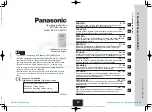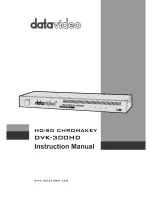
11
GB
bracket, code 196798, is used to secure the caRol™
20-m winch and the caRol™ 30-m winch to one of the
tracpode’s legs.
NOTE
: The caRol™ winch can be used
independently to manoeuvre a load (directive 2006/42/
EEC).
5. Prohibited use
The following are strictly prohibited:
• installing or using a tracpode without being authorised,
trained and recognised as being competent to
use the device or, for anyone not meeting these
requirements, without being supervised by a person
who is authorised, trained and recognised as being
competent to use the device.
• using a tracpode if any of its markings are not legible.
• installing or using a tracpode on which the preliminary
checks have not been carried out.
• using a tracpode on which a periodic inspection has
not been performed during the previous 12 months by
a technician capable of authorising its continued use
in writing.
• using a tracpode in any way that contradicts the
information given in section “15. Service life”.
• the use of a tracpode by a person whose total mass,
including equipment and tools, exceeds 150 kg.
• using a tracpode to support a load of between
100 kg and 150 kg (total mass of the operator, his/
her equipment and tools) if any component of the fall-
arrest system has a lower working load limit.
• using a tracpode if it has been used to arrest a
person's fall.
• using a tracpode as a means of maintaining the
position of a person at a place of work.
•
using a tracpode in a highly corrosive or explosive
atmosphere.
• using a tracpode outside the temperature range
specified in this manual.
• using a tracpode if the clearance below the person is
not sufficient in the event of a fall.
• using a tracpode if any of the operators are not in
good physical condition.
• the use of a tracpode by a pregnant woman.
• using a tracpode if the safety function provided by
any of the associated items is affected by the safety
function of another item or interferes with it.
• performing any repair or maintenance operations
on a tracpode without first having been trained and
qualified, in writing, by TRACTEL
®
.
• using a tracpode if it is not complete, if it has previously
been dismantled and reassembled or if components
have been replaced by a person not authorised by
TRACTEL
®
.
• securing a tracpode using any means other than that
described in this manual.
• using a tracpode as a fall protection system for more
than 2 people.
• anchoring a tracpode to a supporting structure whose
load bearing capacity is less than 13 kN, or which may
be assumed to be less than 13 kN.
6. Installation
6.1. Setting up the tracpode
1. Place the tracpode on the ground.
2. Remove the tracpode’s locking pins for height
adjustment (figures 2.a and 2.b).
3. Adjust the length of the legs to suit the work to be
performed and the space available (figure 2.c).
4. Push the locking pins into place to lock the
telescopic feet (into one of the 6 possible adjustment
positions) and secure them with the spring-loaded
clips (figures 2.a and 2.b).
NOTE:
Never use the 7th hole when setting the
height of the tracpode; this hole should only be used for
attaching a leg bracket (fitted with a blocfor™ or
caRol™) to the tracpode. In any case, the height
adjustment locking pin should not fit into this 7th hole
since its diameter is smaller.
5. Pick up the tracpode and stand it vertically.
6. Spread out the tracpode’s three legs: check that the
top of the legs butts against the spacer bushes fitted
to the head (figure 2.d).
7.
Push the three locking pins, each fitted with a spring-
loaded ball bearing, all the way through the pairs of
holes in the head to lock the legs (figure 2.e).
8. The tracpode is now locked in its working
configuration.
NOTE:
If there is any doubt about the quality or
strength of the ground on which the feet stand then it is
essential to fit the leg strap.
6.2. Fitting the strap
The strap which secures the tracpode’s legs must be
fitted in the following cases:
– If the ground is slippery.
– If the ground is soft or loose.
– If the load supported is greater than 250 kg.
NOTE:
If the ground is loose or soft, place under
each foot a plate with sufficient strong to provide a
stable support surface and to prevent the tracpode’s
feet sinking into the ground.
1. Once the tracpode is locked in its working
configuration (figure 3.a):
Содержание Tracpode
Страница 2: ...1 2 ...
Страница 3: ...3 ...
Страница 4: ...4 ...
Страница 5: ...5 ...
Страница 6: ...6 ...
Страница 63: ......
Страница 65: ......
Страница 66: ......
Страница 76: ...76 ...
Страница 118: ...118 ...












































